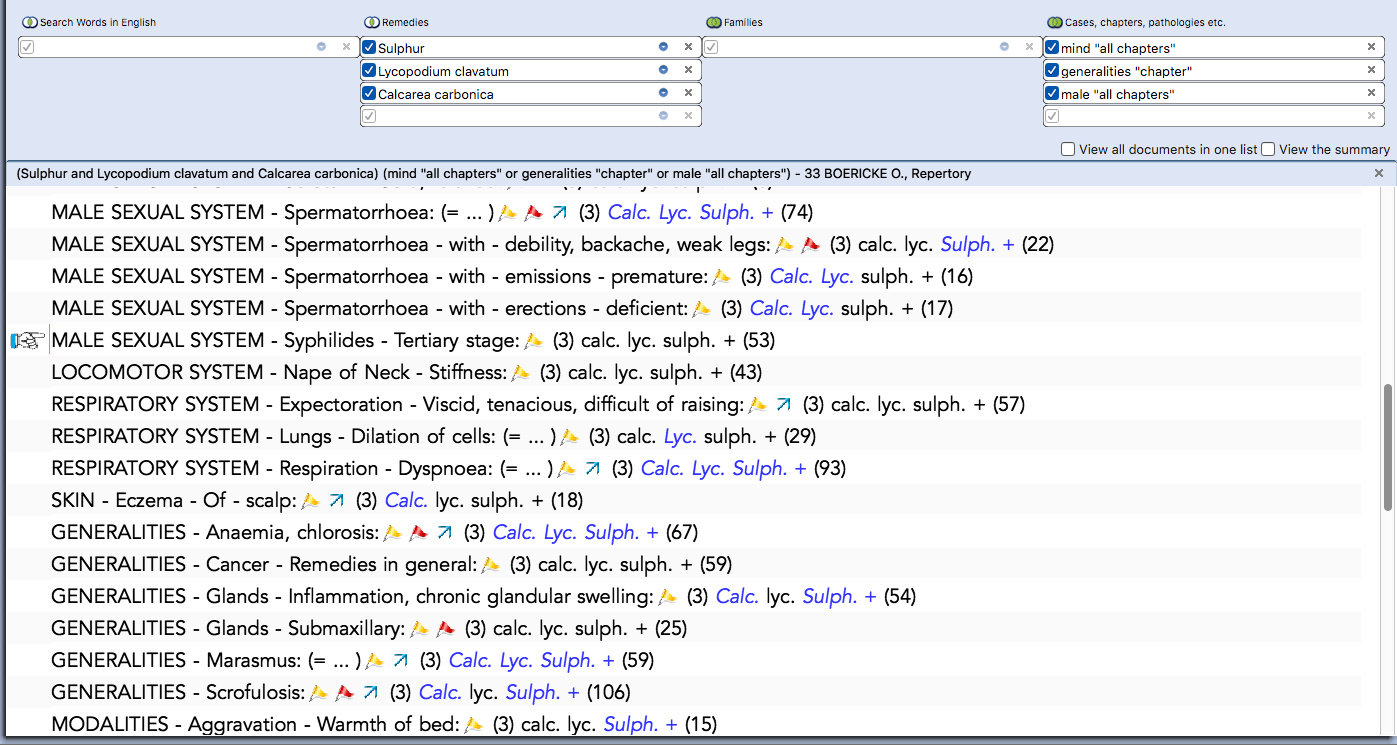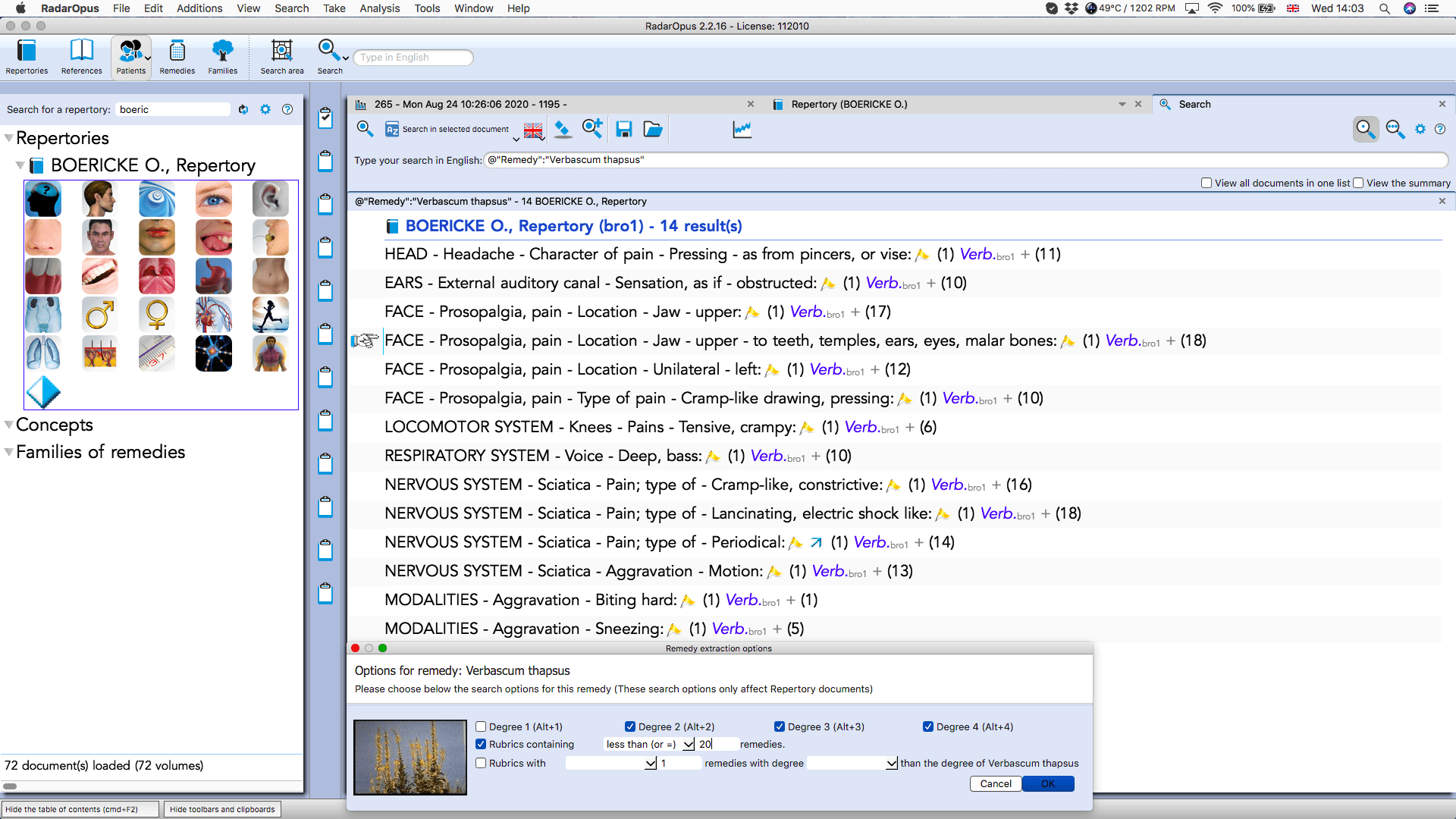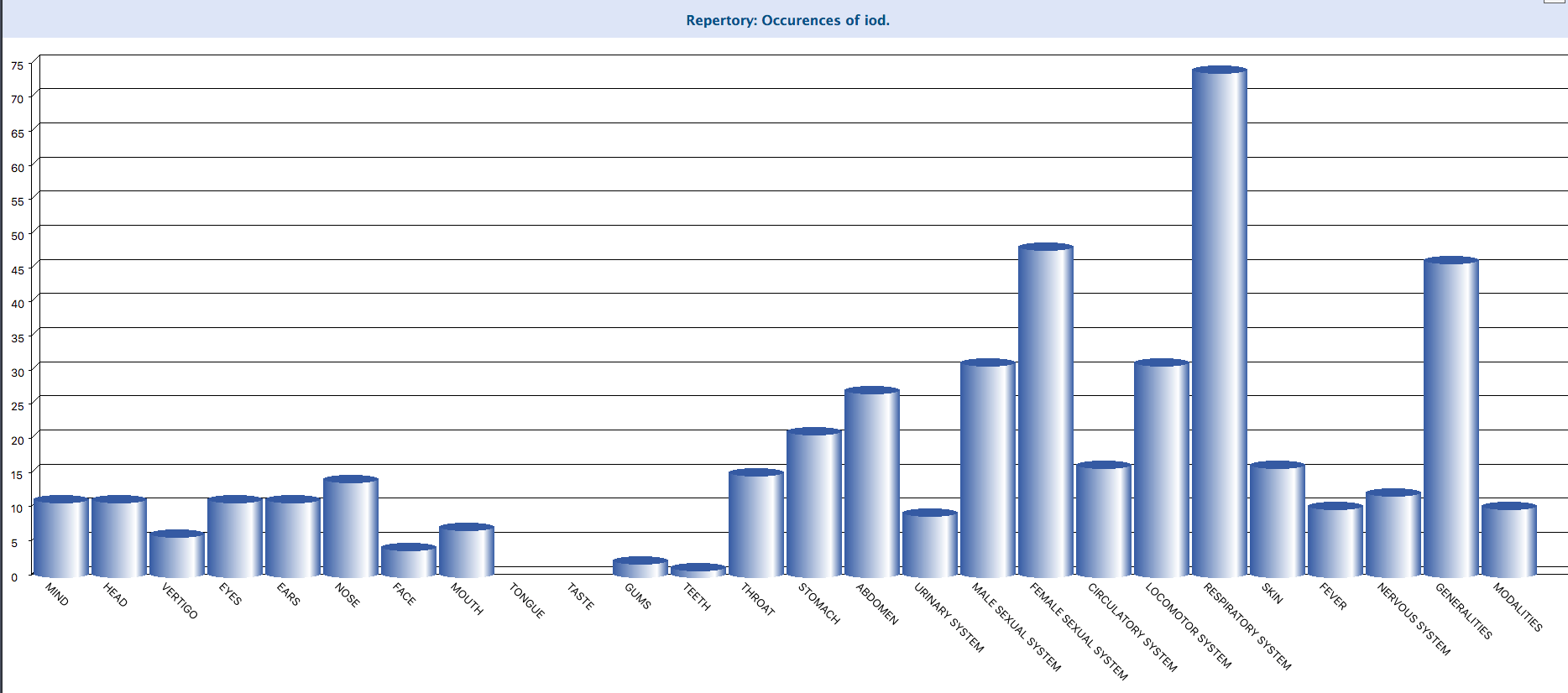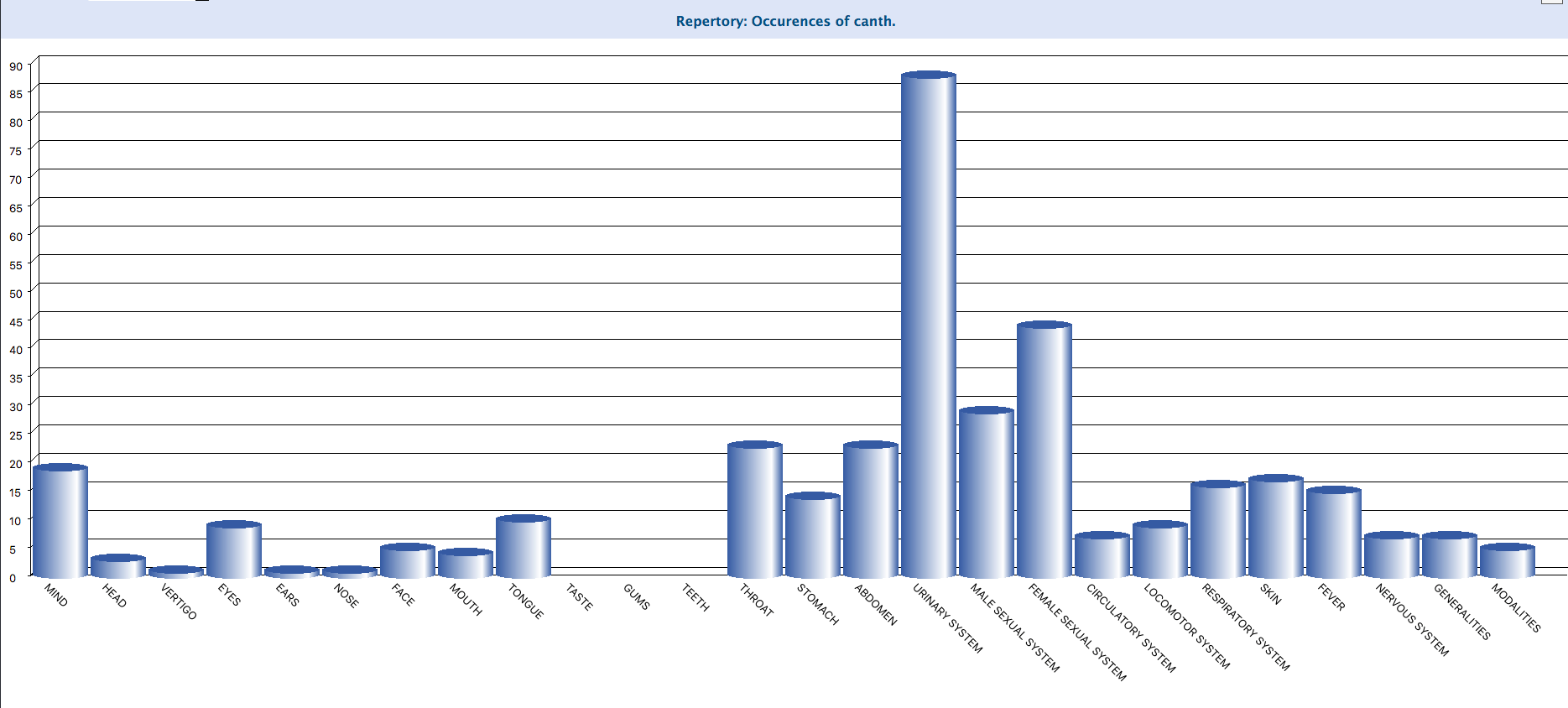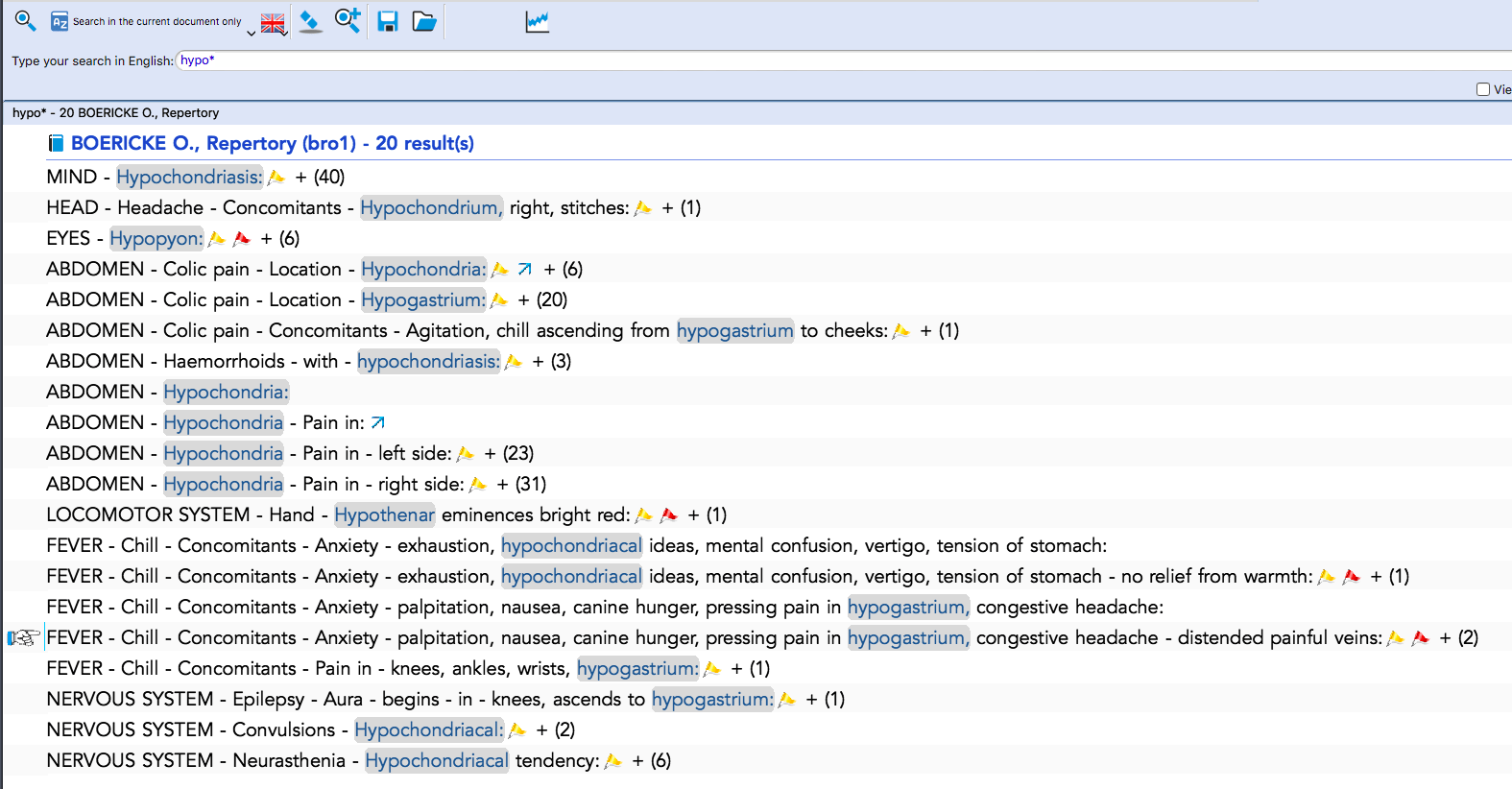Boericke’s Repertory is immensely helpful in search of small remedies – especially for treating the specific pathologies
Boericke’s Repertory can be used to eminent effect in cases where the pathological signs predominate and where a definite aetiology is known.
- It contains over 8,000 symptoms and cites about 1100 remedies!!
- There are various single-remedy rubrics which the experienced Homeopath can use with pinpoint accuracy for accurate and speedy casework.
Elizabeth Wright-Hubbard says the following words-
Dr. Boericke divides symptoms into determinative and basic classes, the basic being the common, pathologic and diagnostic, and the determinative the subjective, generals and modalities. Boericke, like Dr. Margaret Tyler, in England, advocates the use of definite or certain large general rubrics, such as eliminative symptoms, as lack of vital heat, which some Kentians consider dangerous.

This book is a clinical rather than a symptomatological index and has various technical terms as main headings. Owing or overdue to its small size a great many symptoms have had to be omitted from the repertory. Its aspirations are not great but its efficacy and usefulness within its sphere is enormous and tremendous.
Under the all extensive headings, such as HEADACHE, appear definite captions in the following order: Cause, Type, Location, Character of Pain, Concomitants, Modalities, i.e. Aggravations and Ameliorations.
Utilitarian tips for using the Boericke’s Repertory in RadarOpus
● Search in Boericke’s repertory for a word like “cause”, “after” or “complaints” to see all the symptom listings at a glance.
- If you know the pathology, are certain of the cause and can search it in the Boericke repertory, this can be a helpful pointer for a prescription.
- G. A patient comes with deafness since a concussion. you can find the following highly specific rubric:
- EARS – Deafness, hardness of hearing – Cause – Concussion
Search small remedies based on clinical conditions, e.g.:
- FEMALE SEXUAL SYSTEM – Lactation – Milk – Too profuse – galactorrhea
- Medusa is a very small remedy, with only 8 rubrics in Boericke’s Repertory and only 26 rubrics in Murphy’s. Yet has proved efficacy in the above condition, and upon this basis may be considered – especially if there were scant other symptoms in the picture
Another good example of a helpful clinical rubric, again coming from the Female Sexual System, is the following:
- FEMALE SEXUAL SYSTEM – Uterus – Irritable uterus
- In an acute setting, such as very long Braxton Hicks contractions in the latter stages of pregnancy, these clinical rubrics are very handy for the Homeopath to instantly see a list of remedies from which they can cross-check with the Materia Medica to see which would be the best fit remedy.
Boericke’s Repertory is also incredibly helpful when the cause is obvious in the case.
- One such example is the following rubric originate and found in the Generalities section:
GENERALITIES – Night watching, mental strain, ill effects
- “This was a guiding symptom which helped to pinpoint Lac defloratum as a curative remedy in a case of gout. The aetiological factor came from night-watching; meaning to attend to someone on their sick-bed. The case had other Lac remedy themes such as a strong feeling of being unrecognized by one’s group or community, and an inability to stand up for oneself (prey mammal).” (Luke Norland)
Dr. William Boericke observes
“a remedy is selected for a case that is found to possess in its symptomatology marked action (1) in a certain location, (2) to correspond with the sensation, and (3) to possess the modality; without necessarily having in the proving the very symptom resulting from the combination. It is to be inferred that a full proof would have it, however. For instance, a patient with a tearing pain in the left hip, relieved by motion, greatly worse in the afternoon, would receive Lycopodium, not because Lycopodium has so far produced in the healthy such a symptom, but because from the study of its symptoms as recorded in the materia medica, we do find that it effects the left hip prominently (locality); that its pain in various parts of the body are ‘tearing’ (sensation); and that its general symptoms are relieved by motion and aggravated in the afternoon (modality).”
Boericke’s Repertory resembles the Kentian structure rather than the Boenninghausen, but Boericke has reclassified some of the anatomical sections:
- For instance, vertigo appears under HEAD
- Sinuses are grouped together under NOSE
- Lips are under MOUTH instead of FACE
- Tongue has a section to itself as have gums
- Oesophagus is under THROAT instead of STOMACH
- Foods that disagree are in STOMACH with the cravings and aversions
- Rectum and stool are under ABDOMEN
- All the URINARY SYSTEM is together under that heading
- Breasts are rightly classed under the FEMALE SEXUAL SYSTEM
- There is an admirable section on PREGNANCY, LABOR and LACTATION
- After GENITALIA comes the section on the CIRCULATORY SYSTEM including pulse
- Then comes the LOCOMOTOR SYSTEM including extremities, gait, neck, inflammatory rheumatism and arthritis, back, and axillae
- Then comes RESPIRATORY SYSTEM, including lungs, cough, expectoration, larynx, voice and respiration
- Following this is the SKIN
- The FEVER section includes chill and sweat, the exanthems and various fevers such as influenza, typhoid, malaria, etc
- The NERVOUS SYSTEM follows and includes epilepsy, paralysis, sleep, dreams, weakness, convulsions, goiter, sea-sickness, neuralgia, sciatica, spine, meningitis, etc
- The GENERALITIES section is much reduced and contains mainly diseases, tissues, poisonings, suppressions (under Checked discharges), glandular affections including mumps, goiter, a very interesting section on Complaints from winds, damp places, sudden, gradual, injuries, prophylactics, and tumors
- This section has been relieved of much misplaced matter and has added to it a great deal of interesting and valuable material
- The last section is MODALITIES, first aggravations and then ameliorations, and time under these appears in alphabetical order under morning, night, periodicity, etc., instead of altogether at the beginning of the section as in Kent
BOERICKE’S BIOGRAPHY (FROM WIKIPEDIA)
When William Boericke graduated from public high school in Cincinnati in 1863, he shifted to Philadelphia to work for the Boericke pharmacy. In 1870, Boericke & Tafel opened a branch in San Francisco called “Pioneer Homeopathic Pharmacy”, located at 234 Sutter Street. William Boericke ran it from its inception. In 1876, William Boericke moved back to Philadelphia to attend Hahnemann Medical College, where he graduated with an MD in 1880. [8] He then studied at the Vienna Medical School for one year.
Boericke was known internationally in the field of homeopathy and flourished in several dimensions of homeopathy during its rise in the United States. He was a famous clinical physician, prolific academic writer, medical journal editor, publisher, owner of several pharmacies, medical school professor, medicine manufacturer and published researcher.
To the extent that homeopathy had been, and still is, criticized by the mainstream medical community in North America, Boericke’s era of homeopathy, and Boericke in particular, was highly transparent and well-published. Dr. Boericke was also influential and well-known in Europe, particularly Germany – the birthplace of homeopathy, whose people spoke the language of Boericke’s childhood.
At the end of the 19th century, there was hardly a U.S. city with over 50,000 people that didn’t have a homeopathic hospital. In 1890, there were 93 regular medical schools, of which 14 were exclusively homeopathic and 8 were eclectic. In 1900, there were 121 regular medical schools, of which 22 were exclusively homeopathic, and 10 were eclectic. Also in 1900, there were more than 100 homeopathic hospitals, over 60 homeopathic orphan asylums and old people’s homes, and over 1,000 homeopathic pharmacies.




